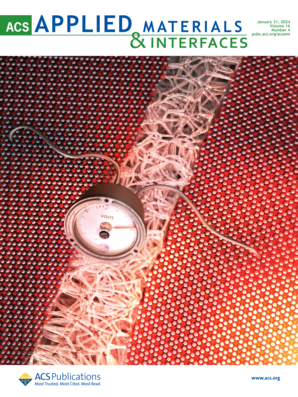高性能超级电容器碳基电极的合理设计
IF 8.2
2区 材料科学
Q1 MATERIALS SCIENCE, MULTIDISCIPLINARY
引用次数: 0
摘要
超级电容器是一种以其高功率密度和长循环寿命而闻名的电能存储设备。然而,它们的低能量密度限制了它们的广泛应用,特别是在电动汽车上。碳纳米材料,包括碳纳米管和石墨烯,由于其独特的结构、优异的电学、机械和热性能、大的比表面积以及在酸性和碱性环境下的化学惰性,是最有希望提高能量密度的电极材料之一。高性能碳基超级电容器的开发取得了重大进展。在本文中,我们首先探讨了超级电容器中电荷存储的起源和机制。然后总结了目前在提高电容性能方面的进展。讨论了高性能超级电容器设计的理论和主要策略,为电极材料的选择和设计提供指导。最后,展望了未来的研究方向和展望,以期推动高效碳基超级电容器的发展。本文章由计算机程序翻译,如有差异,请以英文原文为准。

Toward Rational Design of Carbon-Based Electrodes for High-Performance Supercapacitors
Supercapacitors are electrical energy storage devices renowned for their high power density and long cycle life. However, their low energy density has limited their broader application, particularly in electric vehicles. Carbon nanomaterials, including carbon nanotubes and graphene, are among the most promising electrode materials for enhancing energy density due to their unique structures, excellent electrical, mechanical, and thermal properties, large specific surface area, and chemical inertness in both acidic and alkaline environments. Significant progress has been made in the development of high-performance carbon-based supercapacitors. In this Review, we begin by exploring the origin and mechanisms of charge storage in supercapacitors. We then summarize the current advancements in enhancing the capacitive performance. The theory and primary strategies for designing high-performance supercapacitors are discussed to provide guidance on electrode material selection and design. Finally, future research directions and perspectives are presented with the aim of advancing the development of efficient carbon-based supercapacitors.
求助全文
通过发布文献求助,成功后即可免费获取论文全文。
去求助
来源期刊

ACS Applied Materials & Interfaces
工程技术-材料科学:综合
CiteScore
16.00
自引率
6.30%
发文量
4978
审稿时长
1.8 months
期刊介绍:
ACS Applied Materials & Interfaces is a leading interdisciplinary journal that brings together chemists, engineers, physicists, and biologists to explore the development and utilization of newly-discovered materials and interfacial processes for specific applications. Our journal has experienced remarkable growth since its establishment in 2009, both in terms of the number of articles published and the impact of the research showcased. We are proud to foster a truly global community, with the majority of published articles originating from outside the United States, reflecting the rapid growth of applied research worldwide.
 求助内容:
求助内容: 应助结果提醒方式:
应助结果提醒方式:


